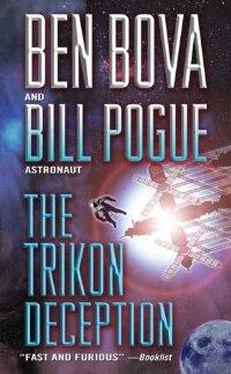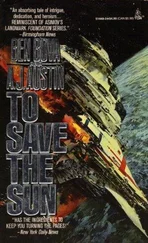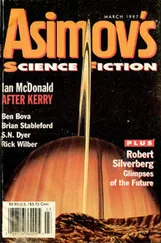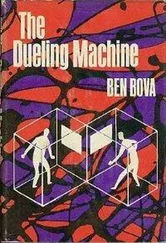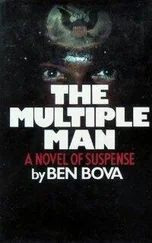“But it is not enough,” continued Jaeckle. “If we are to establish bases on the moon, if we are to travel to Mars, we need the backing of the people. We must beat them into a frenzy of scientific interest, the way it was in the sixties. We can’t have them asking why billions of dollars are being shot into the sky rather than spent on Earth. You and I know the reality. But they don’t. That is why the power-down was so critical.”
“How the hell did we get from our toehold in the heavens to this morning’s incident?” asked Tighe.
“There were millions of people tuned to their sets this morning when Carla Sue and I were explaining the importance of exercise,” said Jaeckle. “Halfway through the script, the screen cut to black. The vice-president in charge of programming has been trying to reach me like mad. I don’t know what the hell I’m going to tell him. They were caught completely unaware in New York.”
“’Good Morning, World’ will survive,” said Tighe.
“Sure it will. But will the Mars program? Millions of people thought the show was cut because of ineptitude.”
“Close. It was pure stupidity,” said Tighe. “Are you now about to tell me I should have waited until your broadcast was over?”
“Of course not. But the warning would have made a difference,” said Jaeckle, “I could have informed the studio, then put our situation into perspective for the audience. The dedicated scientists, the brave crew, the station commander faced with a critical decision. It would have been great drama.”
“We’ve got enough drama up here,” Tighe grumbled. “Whoever stole those files still has the damned bugged disk.”
“Drama sells,” said Jaeckle, unperturbed. “All it would have taken was a warning and a two-minute delay of the power-down. Who knows how many millions of dollars it would have generated for the space program?”
“You sound like a television producer.”
“Unfortunately, it’s what I have to be. I hope you understand that.”
Jaeckle pushed himself away from Tighe’s office and headed for the hatch. As he passed the infirmary he peeked in at Dr. Renoir with his telegenic charm on full beam. Tighe grimaced sourly. Nothing in his conversation with Kurt Jaeckle bothered Tighe as much as the sight of him talking to Lorraine Renoir.
He waited until Jaeckle pushed himself through the hatchway before he started for the doctor’s office. Why does my weekly blood-pressure check have to come on a morning like this? Damned pressure must be high enough to pop my eyeballs.
Dr. Renoir saw him approaching and waved an upstretched finger at him. “I’m rather busy right now, Dan,” she said. “Can we make it this afternoon? Say, two P.M.?”
A wave of relief and gratitude washed over him. He nodded, trying to keep his emotions from showing on his face. “Fourteen hundred hours,” he said.
Lorraine smiled at him. “Right. Fourteen hundred hours.”
Not trusting himself to say anything more, Tighe turned back toward his office. You’ve got two hours and some to get your pressure down to where it ought to be, he told himself. A part of his mind noticed that Dr. Renoir did not seem particularly busy; there was no one in her infirmary; she was not working on her computer or on the phone.
But he ignored the observation. She’s a doctor, he reminded himself. She can ground you for good.
15 AUGUST 1998
THE MARS MODULE
The concept of using biological techniques to repair ecological damage is called bioremediation. Bioremediation was first tried in a major way in the late 1980s, when bacteria were used to help clean up crude oil spilled into the ocean by tankers.
After the Exxon Valdez spilled 10.1 million gallons of crude oil over 368 miles of Alaskan shoreline in 1989, Exxon researchers sprayed some seventy miles of beaches around Prince William Sound with a fertilizer called Inipol that had been developed by the French petroleum company Elf Aquitaine. The aim of the $10-million experiment was to stimulate the growth of bacteria that already existed naturally in the environment and were known to consume hydrocarbons. The beaches sprayed showed dramatic improvement over areas not sprayed, often within fifteen days.
In June 1990 the supertanker Mega Borg caught fire and released nearly four million gallons of crude oil into the Gulf of Mexico. Microbial strains specially developed at the University of Texas to eat a wide variety of crude oils helped to clean up the spill. The microbes were engineered to die off once the oil that served as their food was consumed.
In the aftermath of the environmentally horrendous Middle East war of 1991, genetically engineered microbes helped to digest the hundreds of thousands of barrels of oil deliberately pumped into the Persian Gulf by the Iraqi army. The microbes converted millions of gallons of crude oil into relatively harmless methane and carbon dioxide.
Researchers have suggested using genetically engineered microbes to break down a wide variety of toxic and even radioactive wastes.
Trikon’s goal is to develop bioremediation techniques, using genetically engineered microorganisms, to help reverse the environmental damage done to our planet by generations of air, water, and soil pollution.
—Trikon International media release
After leaving Tighe and Lorraine in the command module, Kurt Jaeckle made his way down the station’s central tunnel until he passed through the double hatch marking the boundary between Trikon Station proper and the Mars module.
The Mars Project was a joint effort between NASA and the European Space Agency to test humans for a planned flight to Mars. Twelve men and women had been selected to spend two full years in space. The original purpose of the project was to simulate the rigors of an actual flight to Mars. This gradually metamorphosed into a study of the subtle stressed microgravity places on the human body and the not-so-subtle conflicts that can arise when people live in close quarters for extended periods of time. Finally, it degenerated into a hodgepodge of conflicting and overlapping experiments as different factions within the two space agencies overlaid their pet projects onto the original scheme.
The greatest conflict centered on the role of the Martians within the Trikon Station community. “Purists” contended that the Mars facility should be a self-sufficient module and the Martians completely segregated from the other people on the station. “Realists” believed that total separation was logistically impossible. Besides, they argued, interaction with outsiders would not invalidate the results because the actual Martian travelers would be able to communicate with Earth, albeit electronically.
The philosophical argument raged for months, and in the end both sides won—and lost. The Martians were divided into two groups of six persons each. One group was allowed to interact with the general station population. They slept in the habitation modules, ate their meals in the wardroom, and spent their leisure time in the exercise and recreation area. The other group never left the Mars module and were shielded from any visitors. In the first six months of the project, no serious differences between the two groups had emerged.
The Mars module was a shuttle external propellant tank adapted for scientific use by a technique known as the “wet workshop.” Unlike the station’s lab and hab modules, which had been completely outfitted on the ground and transported to the station on heavy-lift boosters, only the major structural elements of the eventual Mars module—flooring, workstation wells, bulkheads, internal tunnel—were built into the tank’s two internal sections. The tank was then filled with liquid oxygen and liquid hydrogen; these powered the Constellation’s engines as the shuttle flew into orbit. Since safety considerations required the shuttle engines to shut down before the fuel was completely expended, small amounts of these propellants remained floating weightlessly inside the tank after it achieved orbit.
Читать дальше
